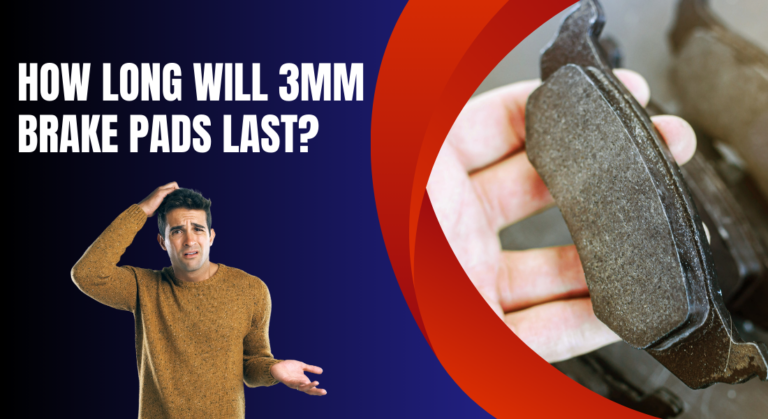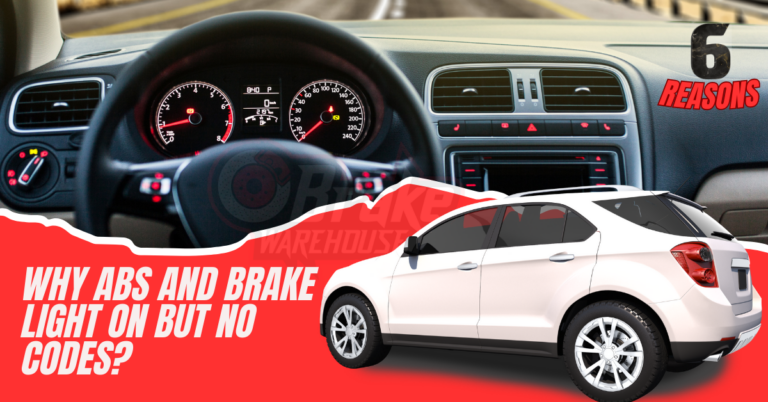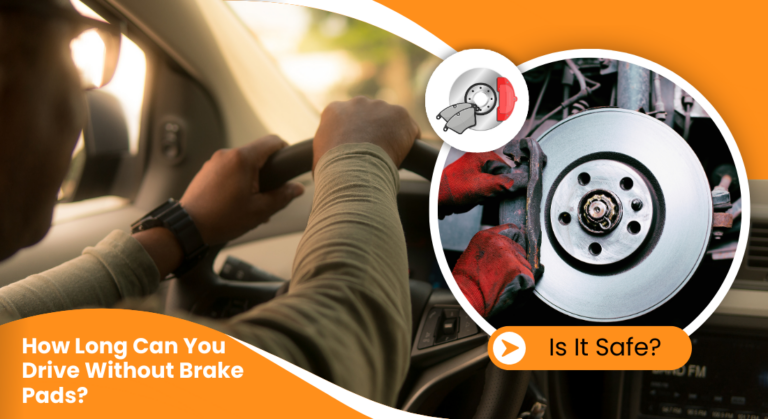How Do You Remove Orange Rust from Brake Rotors? (2 Ways)
Orange rust is a never-ending enemy of brake rotors. Thus, shiny brake rotors can become deficient. At the same time, orange rust significantly impacts vehicle performance. In this case, competent and prompt action is vital. So, how do you remove orange rust from brake rotors?
Thankfully, you can follow multiple processes. Brake cleaner and white vinegar are effective solutions for removing rust from rotors. Moreover, grinding the rotor surface can help retain the aesthetic look of the shiny rotor. Removing the rust makes the brake rotor strong again, keeping your car in good shape.
This comprehensive guide will help you learn the process. Continue reading!
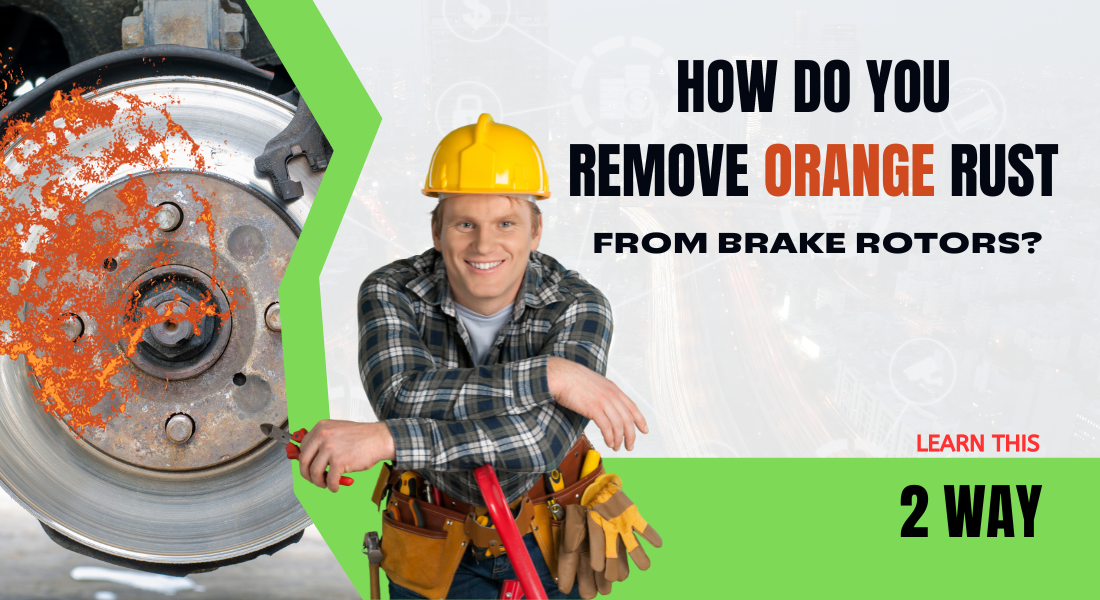
How Do You Remove Orange Rust from Brake Rotors Using a Brake Cleaner?
You can deal brake rotors orange rust effectively following the below tricks,
- Cleaning the rotor disc
- Grinding the rotor disc

For this, you will need a few specific tools listed below,
- Brake cleaner
- Lug nut wrench
- A floor jacks
- Jack stand
- A steel wool or wire brush
Now, follow the below steps,
Step 01: Place your vehicle on a flat surface and use the parking brake. Also, avoid rolling by placing the wheel chock.
Step 02: Get a lug nut wrench to unfasten the wheel nuts.
Step 03: Use a floor jack to elevate your vehicle and support it using a jack stand.
Step 04: Then disassemble the wheel. After that, locate your vehicle’s rusted brake rotors.
Step 05: Dismantle the brake caliper and brake pad set.
Step 06: We will be removing orange rust from the brake rotors in this step. Grab the wire brush or steel wool and apply some brake cleaner. Then, rigorously scrub the central hub, rotor’s outer edge, and friction surface.
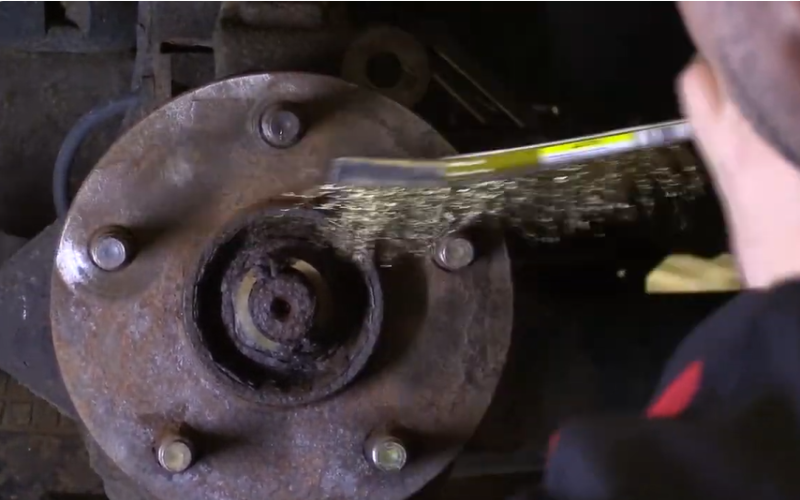
Step 07: Wash and rinse the brake rotor. Check whether orange rust is still available. If the rust doesn’t go away, consider grinding the rotor.
Step 08: Rinse the brake rotor, pad set, and caliper again. Remember to wipe them thoroughly.
Step 09: Reinstall the brake rotor, pad set, and caliper.
Step 10: Fasten the wheel nuts using the lug nut wrench.
Step 11: Test drive your car and see whether the brake system works according to your expectations.
Important Note:
- Follow the directions of the product label meticulously.
However, if the orange rust is excessive and unable to be removed, getting a new rotor will be the best solution.
Read Also: What Causes Grooves in Brake Rotors – How To Prevent It?
How Do You Remove Orange Rust from Brake Rotors Using Vinegar?
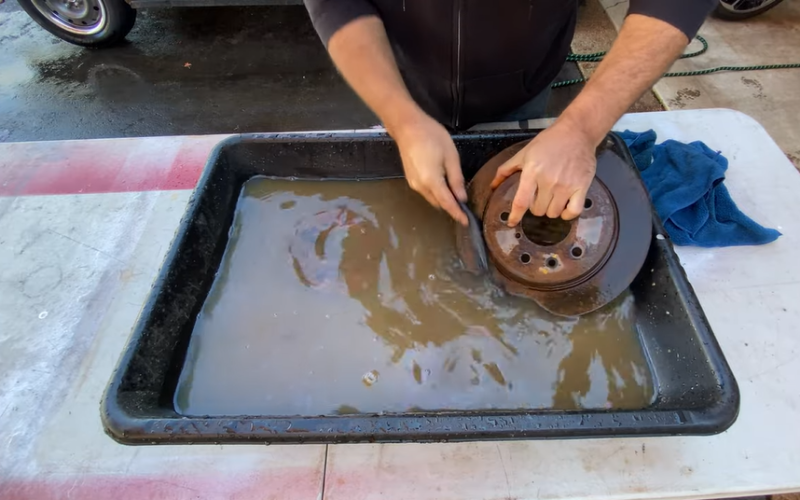
Removing orange rust using vinegar is one of the easiest and most effective methods. Here are the steps to be followed.
Step 01: Ensure the followings
- Park your car on level ground.
- Activate the parking brake.
- Secure with a wheel chock.
Step 02: Utilize a lug nut wrench to loosen the wheel nuts.
Step 03: Elevate the vehicle with a floor jack and stabilize it using a jack stand.
Step 04: Proceed to remove the wheel and locate the corroded brake rotors.
Step 05: Disassemble the brake caliper and brake pad assembly.
Step 06: Pour white distilled vinegar generously onto the brake rotor. Make sure the rotor is thoroughly saturated with the vinegar.
Step 07: Allow the vinegar to sit on the rotor surface for at least 12 hours. This time allows the vinegar to work on breaking down the rust.
Step 08: After the waiting period, take a wire brush and use it to scrub the rotor surface. The rust should come off relatively easily due to the action of the vinegar.
Step 09: Repeat the process if you notice any remaining rust residue on the rotor after scrubbing. Pour vinegar over the rotor, let it sit, then scrub with the wire brush.
Caution:
Avoid using nail polish remover or acetone. These harsh chemicals can strip off the rotor’s protective layer.
Read Also: Brake Pad Rubbing On Rotor While Driving – How To Fix?
How to Keep the Brake Rotors in Tip-top Condition?
Brake rotors are crucial in ensuring effective braking performance and overall vehicle safety. To keep your brake rotors in excellent condition and extend their lifespan, follow these steps:
Regular Inspection and Cleaning
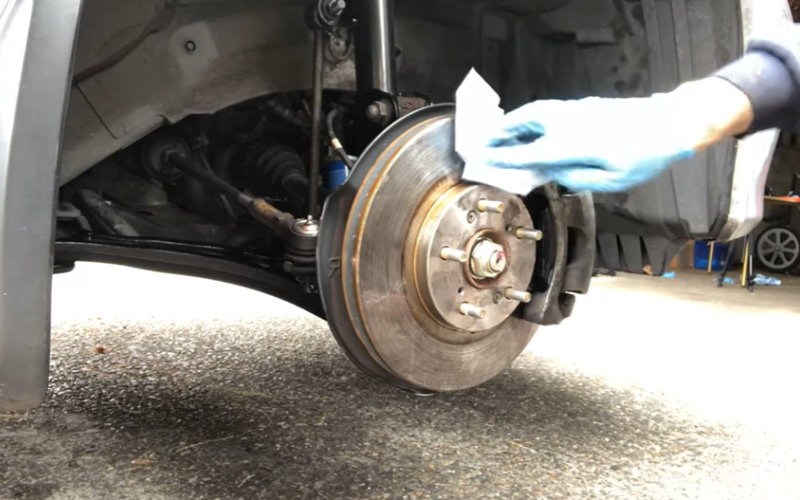
Perform routine visual inspections to spot any signs of wear, uneven surfaces, or rust formation on your brake rotors. Clean the rotors regularly to prevent dust, debris, and brake pad material buildup that can affect their performance.
Gentle Braking Practices
Avoid aggressive braking whenever possible. Gradually decelerate and apply moderate pressure on the brake pedal to minimize excessive heat buildup. Harsh braking generates high temperatures that can warp the rotors over time.
Avoid Brake Overuse on Downhill Slopes
When descending steep inclines, utilize engine braking and downshift gears to reduce the strain on the brake rotors. Continuous brake usage on downhill slopes can lead to overheating and premature wear.
Quality Brake Pads
Invest in high-quality brake pads compatible with your vehicle. Inferior brake pads can lead to uneven rotor wear, reduced performance, and increased rotor damage.
Smooth Tire and Wheel Installation
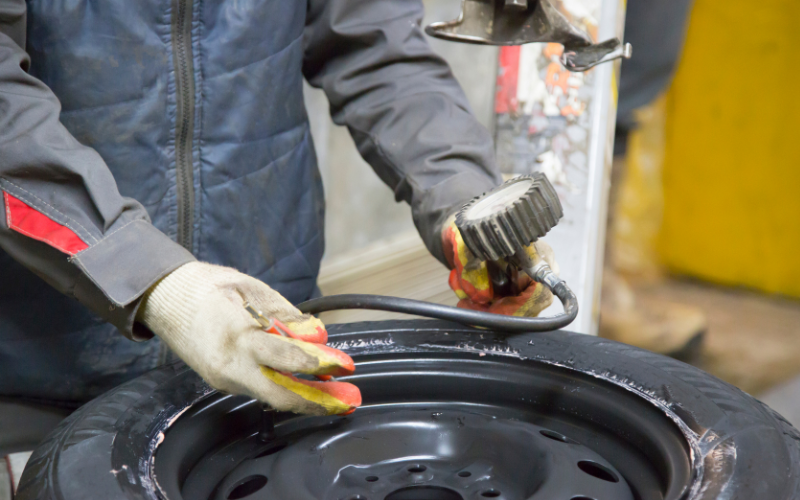
During tire rotations or wheel changes, ensure proper lug nut tightening and even distribution of pressure on the rotors. Improperly secured wheels can cause rotor warping and damage.
Consider Brake Rotor Resurfacing
If you notice minor surface irregularities or rust on the rotors, consider resurfacing them professionally. This process involves removing a thin layer of the rotor’s surface to restore smoothness and functionality.
Avoid Water Exposure

Minimize prolonged exposure of the brake rotors to water, especially after driving in wet conditions. Moisture can accelerate rust formation, affecting braking performance.
Follow Manufacturer Guidelines
Adhere to the manufacturer’s recommended maintenance schedule. Regularly service your vehicle’s braking system, including brake fluid replacement, as stated in the owner’s manual.
Read Also: When or How Often to Replace Brake Rotors?(Common Signs)
FAQs
Is orange rust on brake rotors a severe concern for braking performance?
Orange rust on brake rotors can negatively impact braking performance. It can lead to uneven braking, reduced friction, and compromised heat dissipation, potentially affecting stopping distances and overall brake efficiency, making addressing it essential for safety and performance.
Is it possible to prevent future orange rust formation on brake rotors?
Yes, future orange rust formation on brake rotors can be minimized by keeping the rotors clean and dry, avoiding exposure to moisture, using vehicles regularly, and using protective coatings designed to inhibit rust formation on brake components.
Can I safely drive with orange rust on my brake rotors?
Driving with orange rust on brake rotors is generally safe for short distances, but addressing the rust is advisable to maintain optimal braking performance. Prolonged exposure may compromise braking efficiency and potential vibration or noise issues.
Final Words
The threat because of orange rust on the brake rotor demands attention. Rust’s formation and influence on braking effectiveness is crucial.
Hopefully, this guide on how to remove orange rust from brake rotors delivers an in-depth discussion on rust prevention and removal techniques.
Emphasizing routine upkeep, proactive steps, and high-quality components minimizes the buildup of orange rust in the braking system. You can ensure secure and seamless driving through ongoing care, including applying rust inhibitors.

Meet Zayan, the mechanical genius behind the highly acclaimed brakes problems and solutions website. With over a decade of hands-on experience in the automotive industry, Zayan has become a trusted authority in the realm of brake systems.
His passion for cars, coupled with his expertise in solving complex brake-related issues, has earned him a devoted following of car enthusiasts, mechanics, and everyday drivers seeking reliable guidance.


